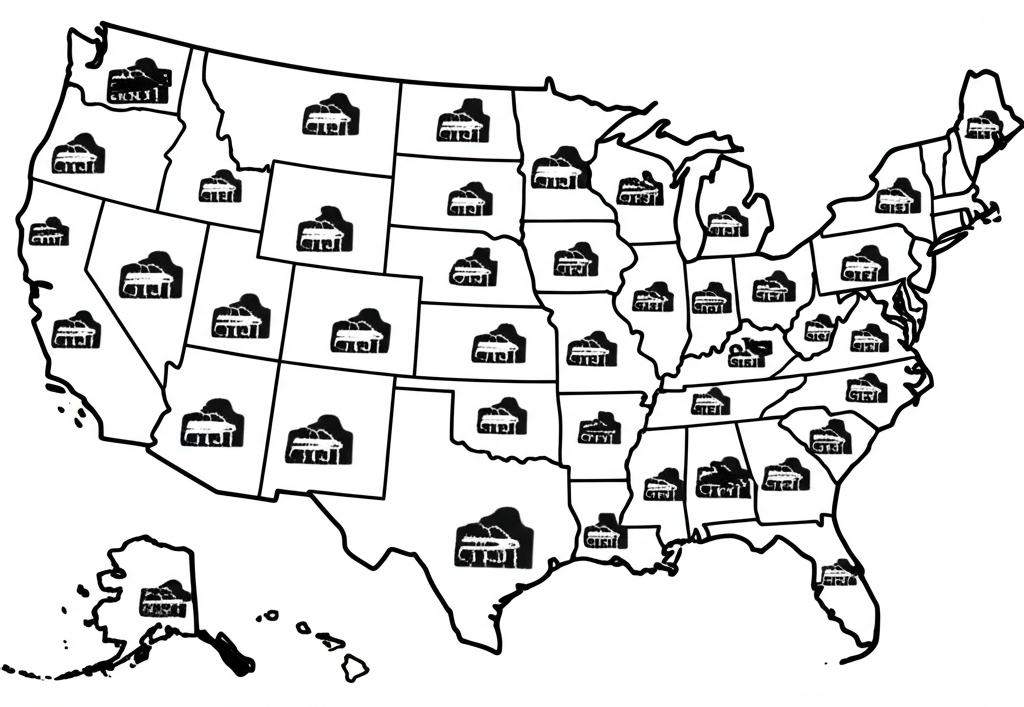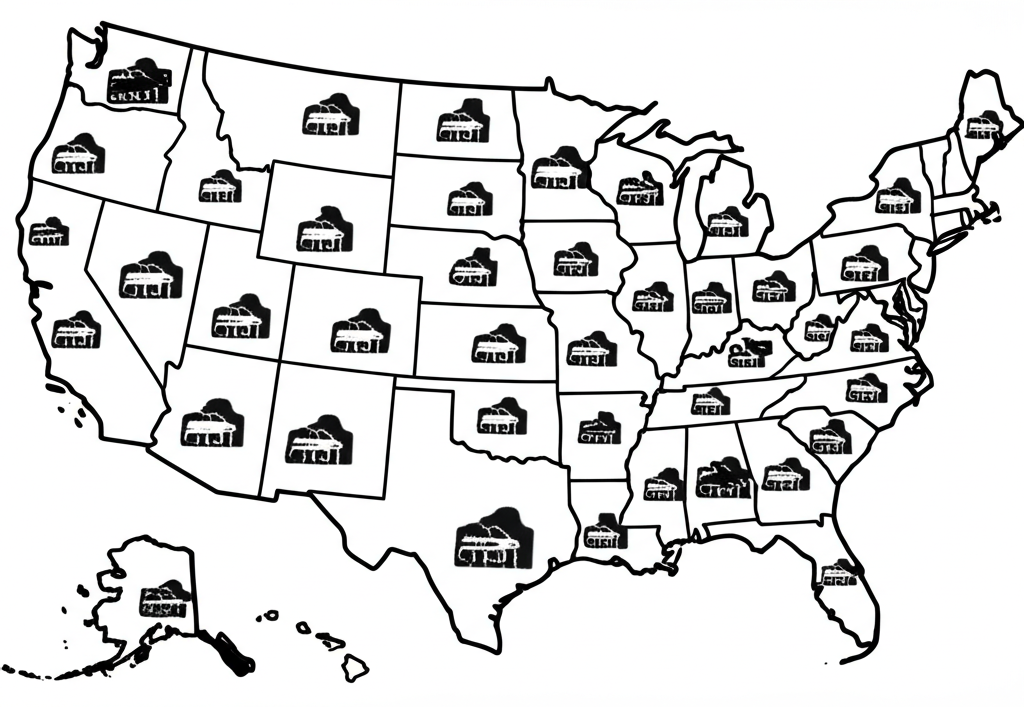Introduction: Understanding Carbon Credits in the United States for 2025
As the push to combat climate change intensifies, carbon credits stand out as a key market-driven approach to cutting greenhouse gas emissions. By 2025, these tools have shifted from abstract ideas to practical elements of U.S. environmental strategies, corporate responsibility efforts, and investor strategies. At their heart, carbon credits act as authorizations for emitting one metric ton of carbon dioxide equivalent (CO2e). They work by putting a price on carbon, which encourages funding for initiatives that curb or capture emissions and support the broader shift to net-zero economies. For Americans-whether individuals, companies, or finance experts-grasping the nuances of carbon credits is essential in this changing world of green investing.

The U.S. landscape for carbon credits blends federal incentives with state-level programs, creating opportunities for businesses to meet sustainability goals and for investors to tap into growing markets. With policies like the Inflation Reduction Act boosting clean projects, 2025 promises expanded roles for these credits in driving real environmental progress while offering financial upside.

What Exactly Are Carbon Credits? A US Perspective
Fundamentally, a carbon credit certifies the avoidance or removal of one metric ton of CO2e from the air. This unit turns environmental gains into tradeable goods, letting markets reward efforts to limit emissions. Projects generating these credits might involve switching to solar or wind power, improving factory efficiency, planting trees, or using tech to pull CO2 directly from the sky. In America, credits serve two main functions: helping regulated sectors comply with laws and allowing voluntary participants to balance their emissions. The process starts with a project proving its impact, followed by checks against tough benchmarks to issue the credits.
Carbon Offsets vs. Carbon Credits: Clarifying the Terminology
People sometimes mix up carbon offsets and carbon credits, but in U.S. discussions, the difference matters. Carbon credits cover any tradeable unit tied to a ton of CO2e reduction. Carbon offsets, on the other hand, describe credits bought and retired to cover someone’s specific emissions. So offsets fall under the credit umbrella, yet credits can also be traded for profit or saved for later rules. U.S. firms need this clarity for proper reporting and smart offsetting plans, especially as scrutiny on sustainability claims grows.
How Do Carbon Credits Work in the United States? The Mechanics Explained
Operating carbon credits in the U.S. follows a clear sequence of creation, checking, exchange, and final use, guaranteeing each one delivers a real climate win.
- Issuance and Verification: It all kicks off with initiatives aimed at slashing or sequestering CO2e, from massive wind farms and landfill gas traps to eco-friendly timber management and CO2-sucking machines. Developers follow approved methods from neutral bodies. Then, certified outsiders scrutinize everything to prove the cuts are genuine, trackable, lasting, extra (not something that would happen anyway), and without shifting pollution elsewhere. Credits only get minted after passing these tests.
- Trading and Retirement: With approval, credits hit the market as buyable items, similar to stocks or oil. When someone grabs one to offset their footprint, they retire it, locking in the benefit and stopping reuse or double dips.
- US-Specific Mechanisms: America relies on trusted overseers to keep things solid. Standouts include the American Carbon Registry (ACR), Climate Action Reserve (CAR), and Verra with its Verified Carbon Standard (VCS), popular here and abroad. They set guidelines for building, checking, and releasing credits, building trust in the domestic scene.
Types of Carbon Credits Relevant to the US Market (2025)
America’s carbon scene splits into voluntary and mandatory streams, each with unique rules and aims.
- Voluntary Carbon Market (VCM): Here, folks and firms buy credits on their own to neutralize emissions, motivated by ethics, ESG priorities, or public pressure. U.S. businesses are jumping in to hit self-set green goals, boost their image, and lead on climate. Expect the VCM to surge through 2025, thanks to bold net-zero pledges and shoppers who care about the planet.
- Compliance Carbon Market (CCM): This one’s enforced by rules, where polluters must cut emissions or buy credits to make up shortfalls. Big U.S. examples are California’s Cap-and-Trade under the Western Climate Initiative (WCI) and the Regional Greenhouse Gas Initiative (RGGI), linking Northeast and Mid-Atlantic states to limit power plant CO2. These setups enforce hard caps, sparking trades in allowances that keep the system humming. Prices swing with policy tweaks, caps, and the economy.
The Carbon Credits Market in the United States (2025): Dynamics and Pricing
The U.S. carbon trade pulses with local rules and worldwide green pushes, creating a lively arena.
- Market Size and Growth: America holds a strong spot in voluntary and required markets. Compliance setups like California’s program and RGGI move billions yearly. The voluntary side, smaller but booming, should keep expanding into 2025 as more firms chase net-zero. Globally, carbon trades topped $900 billion in 2023, with North America chipping in plenty.
- Factors Influencing Price: U.S. credit costs depend on a mix of forces:
- Supply and Demand: How many top-tier projects exist versus what buyers need.
- Project Quality: Ones with clear extras, durability, and side benefits fetch more.
- Regulatory Changes: Shifts in trade programs, new laws, or tighter goals can jolt values.
- Corporate Sustainability Goals: More U.S. outfits aiming for low-carbon ops ramps up voluntary buys.
- Economic Conditions: Recessions or booms alter output, emissions, and credit needs.
- Key US Market Participants: A wide crowd shapes the action:
- Issuers: Folks building projects, like solar outfits or tree farms.
- Verifiers: Outside auditors with credentials.
- Traders: Middlemen, platforms, and banks handling deals.
- Buyers: Rule-bound groups, green-minded corps, and eco-aware people.
Why Do US Companies and Individuals Buy Carbon Credits?
Reasons for grabbing carbon credits in America span legal musts to moral choices.
- Corporate Social Responsibility (CSR) and ESG Goals: Many U.S. businesses buy to show they’re serious about the environment, ticking ESG boxes, aiding world climate aims, and satisfying investors and staff.
- Regulatory Compliance: In covered areas like California’s energy or industry, firms must buy allowances or face fines for busting limits.
- Reputation and Branding: Offsetting builds a positive vibe, drawing green customers, talent, and capital while marking a company as a sustainability frontrunner.
- Individual Offsetting: More Americans are neutralizing personal impacts from flights, drives, or home power use to ease their eco footprint.
Investing in Carbon Credits: Opportunities for US Investors in 2025
Buying single credits outright can be tough for everyday investors due to hurdles and scale, but 2025 opens doors to carbon exposure through smarter channels.
- Direct vs. Indirect Exposure: Hands-on credit buys suit big players in mandatory markets. Most U.S. folks opt for easier indirect paths.
- Related Investment Vehicles:
- Carbon-Focused ETFs: Options like the KraneShares Global Carbon Strategy ETF (KRBN) or iPath Series B Carbon ETN (GRN) bundle futures from key markets such as EUAs, CCAs, and RGGI, trading smoothly on U.S. exchanges.
- Futures Contracts: Savvy investors can hit futures on allowances like EUAs or CCAs via brokers, getting pure price plays but with added risks.
- Shares of Companies: Betting on stocks in renewables, CO2 capture, green woods, or market enablers like verifiers ties into carbon growth without direct trades.
- Risk and Reward: These bets can swing wildly from policy shifts, business cycles, or opinions. Still, the drive to decarbonize and tighten rules points to big upside long-term. Do your homework and match it to your comfort level.
US Broker Platforms for Gaining Exposure to Carbon Markets (2025)
Choosing a solid broker matters for U.S. folks eyeing carbon-linked trades. Consider these trusted options:
- Moneta Markets: This FCA-licensed platform shines with tight spreads on CFDs, giving U.S. investors ways to branch into carbon-tied areas. Direct credit trades stay mostly for pros, but Moneta Markets opens doors to global commodities, indices, energy plays, and green company stocks shaped by carbon trends. With MT4/MT5 tools and solid support, it’s ideal for traders wanting quick, wide-reaching access.
- OANDA: A top U.S.-regulated choice with tons of assets, including indices and commodities that touch carbon-heavy fields or related ETFs. Its easy interfaces and insights fit beginners and pros tracking climate-driven markets.
- FOREX.com: This big U.S.-regulated name offers heaps of CFDs on goods, benchmarks, and stocks. Use it to follow carbon policy effects, backed by tools and learning aids for smart moves in green finance.
The Role of Carbon Credits in US Climate Policy (2025 Outlook)
Carbon credits weave into America’s climate plans, pushing and mirroring cuts at national and local scales.
- Current US Policies: On the federal side, laws like the Inflation Reduction Act (IRA) juice clean energy and industry shifts, indirectly supercharging credit-worthy projects. States lean on setups like California’s Cap-and-Trade and RGGI for targeted reductions.
- Future Trends: By 2025, watch for tweaks or growth in pricing tools, maybe a nationwide carbon fee or broader trades if goals ramp up. Credits will help hit Paris Agreement pledges, stressing proven cuts.
- International Context: America’s Paris comeback influences home markets. As global standards gel under Article 6, U.S. trades could link up more, shaking supply and demand.
Criticisms and Controversies Surrounding Carbon Credits in the US
Even with promise, U.S. carbon credits face pushback and debates that shape their path.
- Additionality and Leakage: Doubts linger on whether cuts truly add new value or just relocate pollution-like saving one woods but losing another. Strong checks are key to counter this.
- Greenwashing Concerns: Some say credits let firms look green without fixing their own messes, dodging real changes.
- Quality and Integrity: Not all credits shine equally; arguments flare over forest projects or measurement methods. Sourcing ethical, solid ones remains a U.S. priority.
- Social and Environmental Justice: Projects abroad can harm locals through land grabs or uneven gains, drawing U.S. eyes to fair play.
The Future of Carbon Credits in the United States: 2025 and Beyond
U.S. carbon credits are set to advance, gaining polish and reach in 2025 and later.
- Innovation and Technology: Tech upgrades like satellite watches, AI analytics, and blockchain tracking will boost trust and speed. CCUS efforts should yield more reliable credits too.
- Market Maturation: Expect tighter project rules, clearer trades, and better oversight, pulling in big money and building buyer faith.
- Evolving US Regulatory Frameworks: Rules will shift at federal and state levels, honing tools and weaving credits into wider plans for max climate punch.
- Long-term Impact: These credits will keep funneling funds to green projects, speeding low-carbon shifts alongside direct cuts and breakthroughs.
Conclusion: Navigating the Carbon Credit Landscape in the US
In 2025 and ahead, carbon credits form a core, adaptable part of America’s climate toolkit. They deliver a trade-based way to fight emissions, aiding rule-followers and voluntary players alike. Though issues like verification and real impact endure, tech advances, market growth, and policy evolution will amplify their power. U.S. investors, firms, and citizens who get this terrain can engage wisely, invest strategically, and help build a greener tomorrow.
How does a carbon credit work in the United States?
A carbon credit in the U.S. stands for a confirmed cut or capture of one metric ton of CO2e. Projects like wind power or tree planting prove their worth, get checked by groups such as the American Carbon Registry, and issue credits. Buyers-firms, people, or those under rules-use them to balance emissions, retiring the credit to make it one-and-done.
How much is 1 carbon credit worth in the US market in 2025?
In 2025, U.S. carbon credit prices fluctuate by market type, project details, and demand. Compliance ones from California’s Cap-and-Trade or RGGI tend to cost more and hold steady thanks to laws. Voluntary prices might span $5 to $50+ per ton, with extras like biodiversity boosts adding value. Watch for shifts from policies, economy, and project supply.
Who issues carbon credits and who gets the money for them?
Neutral registries like the American Carbon Registry, Climate Action Reserve, or Verra hand out credits after third-party audits confirm reductions. Sale proceeds mainly support project builders, funding things like solar setups, eco-forests, or gas capture to keep climate efforts rolling.
What are the main types of carbon credits available in the US?
U.S. markets feature two primary kinds:
- Voluntary Carbon Credits: Bought freely by businesses or people to offset emissions out of commitment to green causes.
- Compliance Carbon Credits (Allowances): Legally required in systems like California’s Cap-and-Trade or RGGI to hit emission limits.
How can US investors gain exposure to carbon credits trading?
U.S. investors can dip into carbon trades via indirect routes:
- Carbon-Focused ETFs: Like KRBN or GRN, following allowance futures.
- Futures Contracts: Trade specifics like EUAs or CCAs through brokers for direct bets.
- Stocks of Related Companies: Pick firms in renewables, capture tech, green timber, or market support.
While not direct, Moneta Markets gives access to commodity and index CFDs tied to sustainable sectors like energy and eco-stocks, influenced by carbon dynamics.
What are the pros and cons of carbon credits for US businesses?
Pros:
- Meets legal needs in trade programs.
- Boosts CSR and ESG ratings.
- Strengthens brand appeal to green audiences.
- Offers flexible emission management.
Cons:
- Questions on true added value and project effects.
- Greenwashing risks without core cuts.
- Price swings hit planning.
- Hard to guarantee credit quality.
Why did Taylor Swift (or other prominent figures) buy carbon credits, and what does it mean?
Stars like Taylor Swift buy credits to counter big footprints from jets or tours, funding offset projects to balance their emissions. It signals eco-accountability and supports climate work, though some call it superficial without personal changes.
Are carbon credits an effective solution for climate change in the US?
They’re a solid piece of the U.S. climate puzzle, spurring cuts and funding via markets when standards ensure real, lasting impact. But they’re no fix-all-pair them with bold direct reductions to tackle the crisis head-on, amid worries over quality and equity.
How to sell carbon credits from a verified US project?
Start by aligning your project with standards from the American Carbon Registry or similar, then get audited for certified reductions. With registry-issued credits, sell via:
- Brokers/Intermediaries: Links to buyers.
- Carbon Exchanges: Trade spots, rarer for small projects.
- Direct Sales: Deals with offset seekers.
For broader market ties, Moneta Markets connects to CFDs in commodities and stocks affected by green finance, not direct project sales.



No responses yet